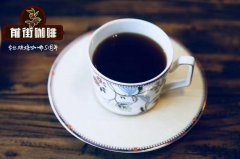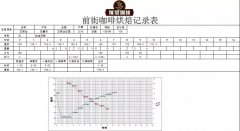What kind of coffee do you have in Spain? Coffee shop culture in Spain

Professional coffee knowledge exchange more coffee bean information please follow the coffee workshop (Wechat official account cafe_style)
The Spaniards in the 17th century were keen to drink chocolate because their conquerors "discovered" cocoa beans in Central America. Coffee shop culture did not become popular until as late as the 19th century. At the beginning of the 20th century, artists and writers were regulars in coffee houses in Barcelona, Granada and Madrid. Even so, chocolate has been a traditionalist drink for many years.
According to the data, although there were not many coffee houses until 1680, Viennese drank coffee at home as early as the 1660s. The Viennese's preference for coffee was undoubtedly initiated by Ambassador Ottoman, who lived in Nayana for several months, that is, a large number of attendants and coffee. Travelers in Nayena enjoyed coffee and fell madly in love with this novel drink. It even led the city treasurer to protest against the excessive amount of wood consumed by the fire that made the material. When the ambassador was about to leave, the Viennese had bought coffee beans from the Oriental Trading Company and made their own coffee.
About 20 years later (1683), Vienna was besieged by Turkey. A Polish immigrant who looks like a Turk, Franz Kochsky (Franz Kolschitzky), bravely slips out of the enemy line to send a message between Austrian reinforcements waiting for rescue and the besieged Nayenais. Because of his bravery, the Turks were beaten and fled in a hurry, leaving behind many strange things. Among the trophies, Kirchsky asked for bags of green coffee beans. In order to reward his bravery, the elder of the city granted him a house, and Kirchsky opened the first coffee shop in the city. According to other versions of the story, he first sold coffee beans door to door and later asked for a house. Some versions believe that the first coffee shop was owned by an American. No matter what the truth is, coffee has already appeared in Vienna.
The coffee shop in this city is not only a place where people gather, but also a way of life. They provide? Good coffee (28 famous types) and rich newspapers and periodicals. The most unique features of the Viennese style are wooden newspaper poles, marble tables and curved wooden chairs, which later became the stamp of European coffee houses.
Guests in Vienna ── are usually male. ── is as unique as a coffee shop. As a writer said, they share a world view with each other, ── an attitude towards the world, and they don't want to see the world at all. Another wrote that dislike of outdoor air and sports is almost a common characteristic, and they do not like family life. Many people visit the coffee shop several times a day in ── mornings and afternoons for quiet reading of newspapers and evenings for games or knowledge exchanges.
The most famous coffee houses, such as Griensteidl and Sperl, have a group of knowledgeable customers, writers, political activists and artists. Many cafes have become strongholds of some extreme views, such as ──: Gormustindo opposes the liberation of girls. But there are other cafes frequented by textile traders, dentists, horse traders, politicians and pickpockets.
Coffee houses continued to be added, not only in Vienna, but in all the territories of the Austrian Habsburg dominions dynasty. Coffee houses in Prague, Krakow and Budapest are as popular as those in Vienna. However, Vienna is still the "mother of coffee shops". By 1840, there were more than 80 coffee houses in the city, and by the end of the century, the total had reached an incredible 600.
In Spain, besides coffee and con leche, people often order cortado, that is, espresso with a little bit of milk. People who have lived in Spain for a long time are used to drinking this kind of coffee.
As for iced coffee, you should DIY yourself in Spain. The coffee shop gives a cup of black espresso and a cup with ice cubes. The coffee drinker adds sugar to the coffee and pours it into a cup with ice cubes. It becomes iced coffee. So the Spanish word for iced coffee is Caf é con hielo, which really means "coffee on the rocks".
So, the most common coffee in Spain is:
Coffee é solo: black espresso
Coffee é con leche: coffee with milk
Cortado: espresso with a little milk
Coffee é con hielo: iced coffee
END
Important Notice :
前街咖啡 FrontStreet Coffee has moved to new addredd:
FrontStreet Coffee Address: 315,Donghua East Road,GuangZhou
Tel:020 38364473
- Prev

How to participate in Panamanian international auction? What are the Panamanian coffee competitions?
Professional coffee knowledge exchange more coffee bean information please follow the coffee workshop (Wechat official account cafe_style) Panamanian coffee is the hottest country in Central America in the past 56 years, mainly because Geisha, a coffee tree species planted in the Peterson family-run Panamanian Emerald Manor (Hacienda La Esmeralda), makes coffee fans crazy, calling Geisha the world.
- Next

The effect of Mena reaction time on Coffee A suitable baking method for Alida in Panama
Professional coffee knowledge exchange more coffee bean information Please follow the coffee workshop (Wechat official account cafe_style) We all know that there are two major reactions in the roasting process of coffee beans: the Mena reaction and the caramel reaction. The Mena reaction can be said to be the most complex reaction in the coffee roasting process, and it is also one of the most important reactions to produce a variety of coffee flavors. In this.
Related
- Detailed explanation of Jadeite planting Land in Panamanian Jadeite Manor introduction to the grading system of Jadeite competitive bidding, Red bid, Green bid and Rose Summer
- Story of Coffee planting in Brenka region of Costa Rica Stonehenge Manor anaerobic heavy honey treatment of flavor mouth
- What's on the barrel of Blue Mountain Coffee beans?
- Can American coffee also pull flowers? How to use hot American style to pull out a good-looking pattern?
- Can you make a cold extract with coffee beans? What is the right proportion for cold-extracted coffee formula?
- Indonesian PWN Gold Mandrine Coffee Origin Features Flavor How to Chong? Mandolin coffee is American.
- A brief introduction to the flavor characteristics of Brazilian yellow bourbon coffee beans
- What is the effect of different water quality on the flavor of cold-extracted coffee? What kind of water is best for brewing coffee?
- Why do you think of Rose Summer whenever you mention Panamanian coffee?
- Introduction to the characteristics of authentic blue mountain coffee bean producing areas? What is the CIB Coffee Authority in Jamaica?

